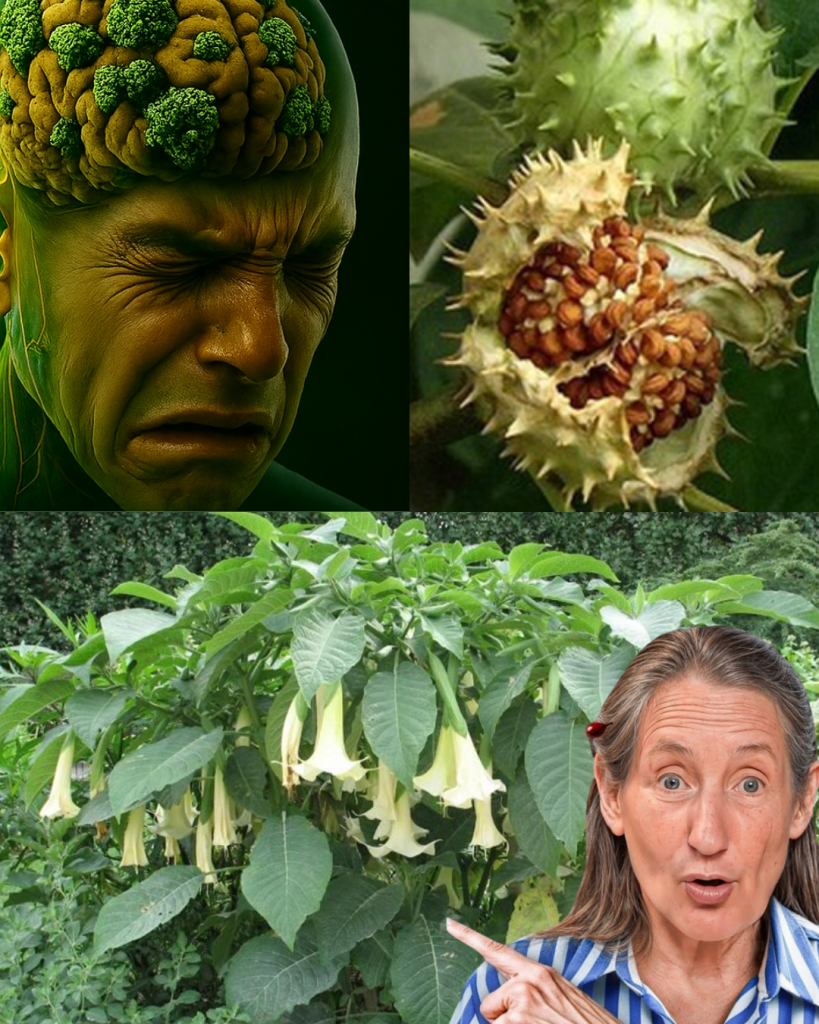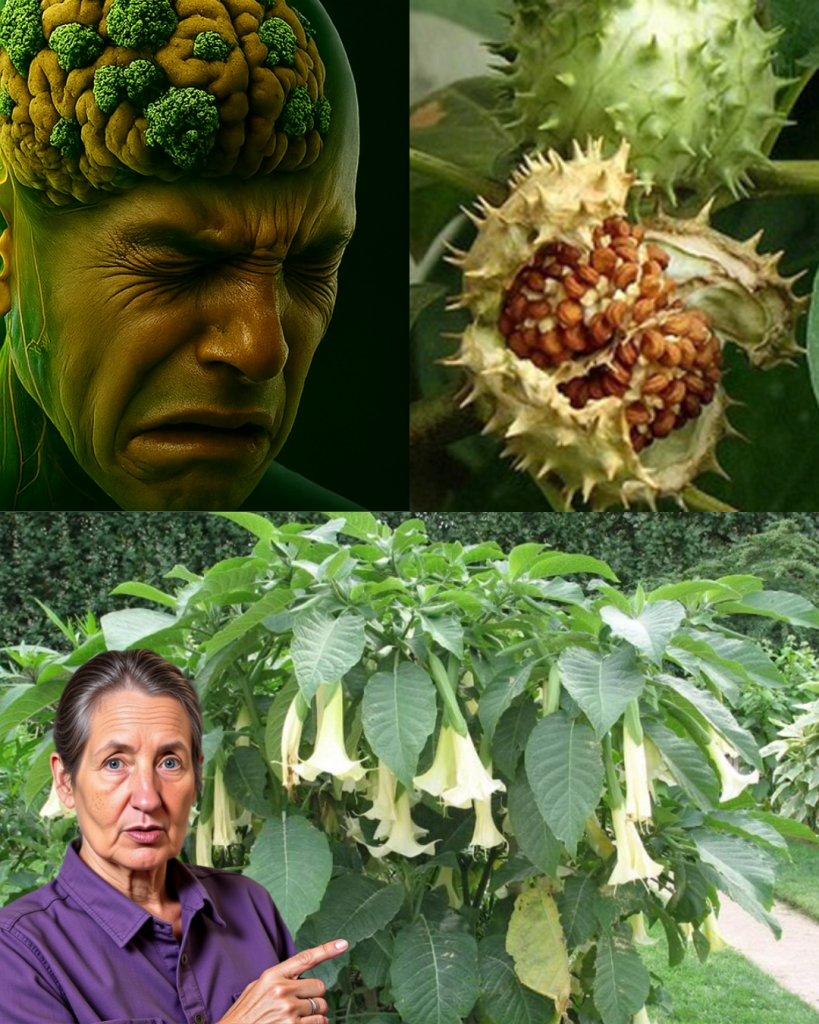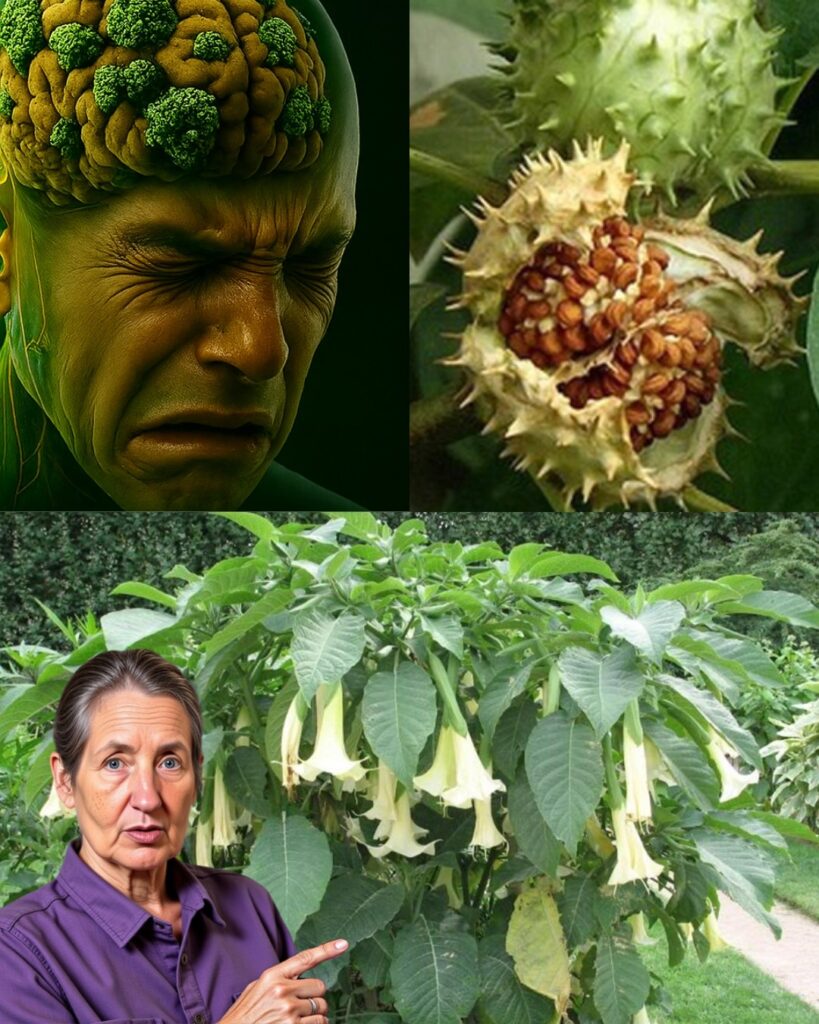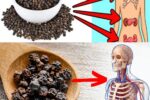🌿 The Hidden Menace in Your Garden: Datura Stramonium’s Deadly Charm
Imagine strolling through your garden, the air filled with the sweet scent of blooming flowers, when a striking plant catches your eye. Its trumpet-shaped blossoms, glowing under the moonlight, seem to whisper secrets of beauty and mystery. But beware—this captivating plant could be Datura stramonium, known as jimsonweed or devil’s trumpet, a silent killer lurking in plain sight. Beneath its alluring exterior lies a toxic threat that can endanger you, your loved ones, and even your pets. Ready to uncover the dark allure of this garden menace? Let’s dive into its secrets, learn how to spot it, and discover how to keep your garden safe while staying captivated by its dangerous charm.

🌸 What Is Datura Stramonium?
Datura stramonium, a member of the nightshade family, is an annual plant that thrives in warm climates across the globe. Native to Central America, it has spread far and wide, popping up in gardens, along roadsides, and in disturbed soils. Its large, trumpet-shaped flowers—white or faintly purple—bloom in a mesmerizing display, often opening at dusk and closing by midday. The plant’s spiky, walnut-sized seed pods, nicknamed thornapples, add to its distinctive look. But don’t be fooled by its beauty. Every part of this plant—leaves, seeds, flowers, and roots—contains potent alkaloids like atropine, hyoscyamine, and scopolamine. These compounds, while once used in traditional medicine, make Datura stramonium a serious health hazard if mishandled.
This plant’s ability to blend into gardens as an uninvited guest makes it a hidden danger. Its resilience allows it to thrive in poor soils, and its seeds can lie dormant for years, ready to sprout when least expected. For gardeners, this combination of beauty, invasiveness, and toxicity creates a perfect storm—one that demands awareness and caution.
💀 Why Datura Stramonium Earns Its “Garden Killer” Title
What makes Datura stramonium so notorious? Its danger lies in three chilling traits:
Toxic Powerhouse: The alkaloids in Datura stramonium can wreak havoc on the human body, causing symptoms from mild confusion to life-threatening heart complications. Even a small amount can trigger severe reactions, making it a plant to respect from a distance.
Deceptive Allure: Those stunning trumpet-shaped flowers and intriguing spiky pods can tempt curious children, pets, or even unaware gardeners to touch or ingest them, leading to accidental exposure.
Invasive Spread: Datura stramonium doesn’t wait for an invitation. It spreads rapidly, sprouting in gardens and yards with ease, often catching homeowners off guard.
This plant’s ability to disguise its danger behind a veil of beauty makes it a true garden killer. Understanding its dual nature is the first step to protecting yourself and your loved ones.
⚠️ The Hidden Health Risks of Datura Stramonium
The seductive charm of Datura stramonium’s flowers masks a host of dangers. Exposure through ingestion, skin contact, or even inhalation can lead to serious health consequences. Here’s a closer look at what you’re up against:
Anticholinergic Chaos: The plant’s alkaloids disrupt the parasympathetic nervous system, leading to symptoms like dry mouth, rapid heartbeat, and dilated pupils. These effects can escalate quickly, leaving victims disoriented and vulnerable.
Mind-Altering Effects: Ingesting even a tiny amount can trigger vivid hallucinations, confusion, or delirium. These neurological impacts can be terrifying, turning a moment of curiosity into a medical emergency.
Life-Threatening Outcomes: In severe cases, high doses can lead to coma or heart complications, making immediate action critical.
Skin and Eye Irritation: Brushing against the plant or getting its sap on your skin can cause rashes or intense irritation, especially if it reaches your eyes.
Children and pets, with their natural curiosity, are especially at risk. A single encounter with Datura stramonium could turn a peaceful garden moment into a nightmare. Knowing these risks empowers you to act swiftly and stay safe.
🌱 How to Spot Datura Stramonium in Your Garden
Identifying Datura stramonium before it becomes a problem is your best defense. Here’s how to recognize this dangerous beauty:
Flowers: Look for large, trumpet-shaped blooms, 2.5 to 3.5 inches long, in white or lavender hues. They open at night and close by midday, giving them a mystical glow under moonlight.
Leaves: Dark green, lobed, or toothed, these leaves can grow up to 8 inches long and emit a foul odor when crushed—a telltale sign of their toxic nature.
Seed Pods: The spiky, walnut-sized capsules, known as thornapples, split open when ripe to release small black seeds. These pods are a key identifier.
Growth Habit: The plant grows 2 to 5 feet tall with a bushy, branching structure, often thriving in disturbed soils like garden beds or near pathways.
Be cautious not to confuse Datura stramonium with similar plants, like black nightshade (Solanum nigrum), which has smooth berries when mature. Datura’s spiky pods are a clear giveaway. If you’re unsure, use a plant identification app or consult a local extension service to confirm before taking action.
🧤 Safe Removal: Keeping Datura Stramonium at Bay
If you discover Datura stramonium in your garden, removing it safely is critical to protect yourself and others. Follow these expert-recommended steps to eliminate the threat:
Gear Up for Safety: Always wear gloves, long sleeves, and eye protection when handling the plant. Its sap can irritate skin and eyes, so full coverage is non-negotiable.
Dig Deep: Use a shovel to remove the entire plant, including its roots, to prevent regrowth. The seeds can remain viable in soil for years, so thorough removal is essential.
Dispose with Care: Place the plant in a sealed plastic bag and throw it in the trash—not your compost pile—to avoid spreading seeds.
Clean Up Thoroughly: After removal, wash your hands, tools, and clothing with soap and water to eliminate any toxic residue.
Stay Vigilant: Monitor your garden regularly for new growth, as seeds can germinate after soil disturbance.
If the task feels overwhelming, don’t hesitate to call a professional landscaper or your local cooperative extension for help. Your safety is worth the extra effort.
🚨 What to Do If Exposed to Datura Stramonium
Accidental exposure to Datura stramonium demands swift action to minimize harm. Here’s your emergency plan:
If Ingested: Call 911 or the Poison Control hotline at 1-800-222-1222 immediately. Do not induce vomiting unless instructed by a professional. Time is critical.
If Touched: Wash the affected area with soap and water for at least 15 minutes. Seek medical advice if irritation lingers or worsens.
If Inhaled: Move to fresh air immediately and watch for symptoms like dizziness or rapid heartbeat. Seek medical help if symptoms arise.
For Pets: If your pet may have chewed the plant, contact a veterinarian right away.
Keep emergency numbers handy and share this knowledge with family and friends who garden. A little awareness can prevent a lot of harm.
🌼 Why Awareness of Datura Stramonium Is a Game-Changer
Knowing about Datura stramonium isn’t just about avoiding danger—it’s about taking control of your garden and protecting those you care about. Its stunning flowers may tempt you to pause and admire, but its toxic nature demands respect. By learning to identify and manage this plant, you’re creating a safer outdoor space for your family, pets, and visitors. Education is your greatest weapon against accidental poisonings, especially in homes with curious kids or animals.
This plant’s history adds another layer of intrigue. Once used in traditional medicine for its potent properties, Datura stramonium reminds us of nature’s complexity—beautiful, powerful, and sometimes dangerous. By staying informed, you’re not just gardening smarter; you’re embracing the wild, untamed spirit of the natural world while keeping safety first.

🌿 Create a Safer, Thriving Garden
Your garden should be a sanctuary, not a source of worry. Beyond managing Datura stramonium, consider these tips to make your outdoor space a safe and vibrant haven:
Choose Non-Toxic Plants: Opt for pet- and kid-friendly plants like marigolds, sunflowers, or lavender to minimize risks.
Regular Inspections: Walk your garden weekly to spot and remove unwanted plants before they spread.
Educate Your Household: Teach family members, especially children, to avoid touching unknown plants.
Pet-Proof Your Yard: Create barriers or designated play areas to keep pets away from potentially harmful plants.
By taking these steps, you’re not only protecting your loved ones but also crafting a garden that’s as safe as it is beautiful.
✨ The Final Word: Embrace Knowledge, Stay Safe
Datura stramonium is a reminder that beauty in nature often comes with a hidden edge. Its trumpet-shaped flowers and spiky pods may captivate, but its toxic power demands vigilance. By learning to identify, remove, and respond to this plant, you’re empowering yourself to enjoy your garden without fear. Share this knowledge with fellow gardeners, and let’s create outdoor spaces that are as safe as they are stunning. Have you encountered a surprising plant in your garden? Drop your story in the comments—we’d love to hear about your experiences!



